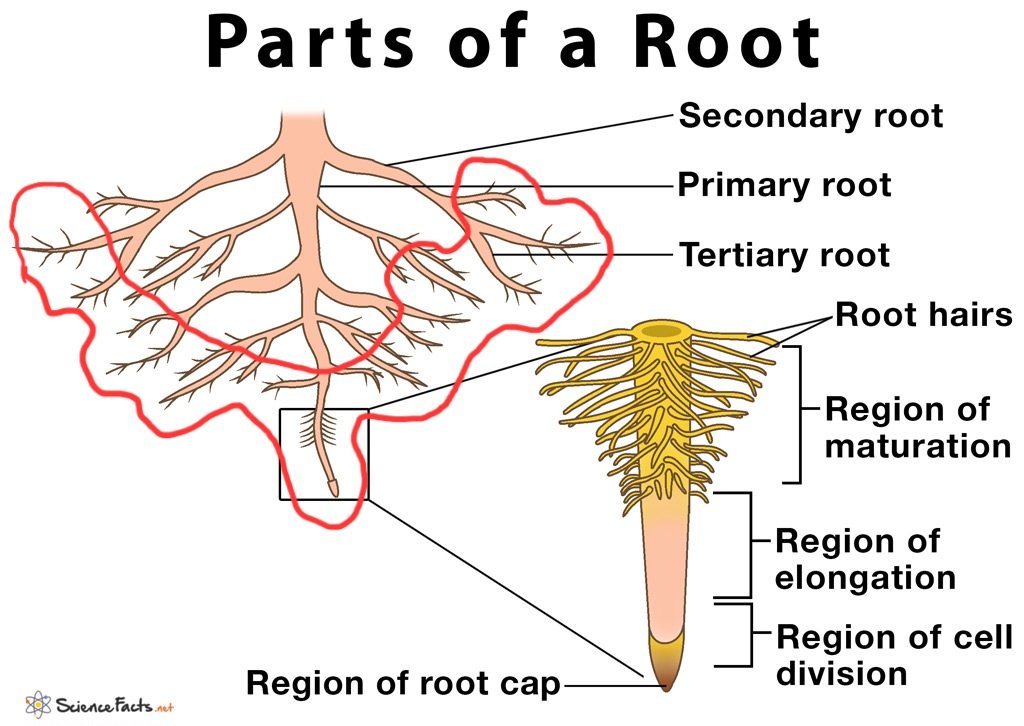Why You Can't Easily "Move" Woody Plants: It's in the Roots
So often I hear people making the assumption that small trees and shrubs and other woody plants can easily be "moved", but in most cases this is a pipe dream and destined to fail.
Why digging up and moving trees and shrubs often doesn't work :
The only parts of the roots that are engaged in absorption of water and nutrients are the distal few inches of the root, where the root hairs are (the part of the illustration circled in red), but root hairs are somewhat short-lived and don't last long as they are continuously replaced as the root grows.
As the roots continue to grow and elongate, root hairs die and are not replaced at the same site the way that branches are, which may resprout from dormant buds on the stem or shoot. Root hairs are only produced at the root apical meristems on tap roots and lateral roots, the rest of the root above that is only plumbing and transport, not absorption, though lateral roots and secondary roots can also have growing tips which produce root hairs.
When you dig up a plant, you are mostly severing those distal (as opposed to proximal) root segments that contain the root hairs, which mean that the plant now has no way of absorbing water and must regrow new roots. This is the main reason why "moving" plants so often fails. The only way to ensure that you do not sever the parts of the root that contain the root hair when moving something like a small tree is to make sure that you basically remove the entire crater of soil that the tree is growing in, which usually necessitates the use of a tree spade mounted on a small dozer.
If you ARE able to get a decent amount of roots with root hairs when digging a plant, be aware that sometimes the best way to ensure success is to sever some of the shoot up top, maintaining an adequate root-to-shoot ratio and preventing evapotranspiration of moisture from leaves.
